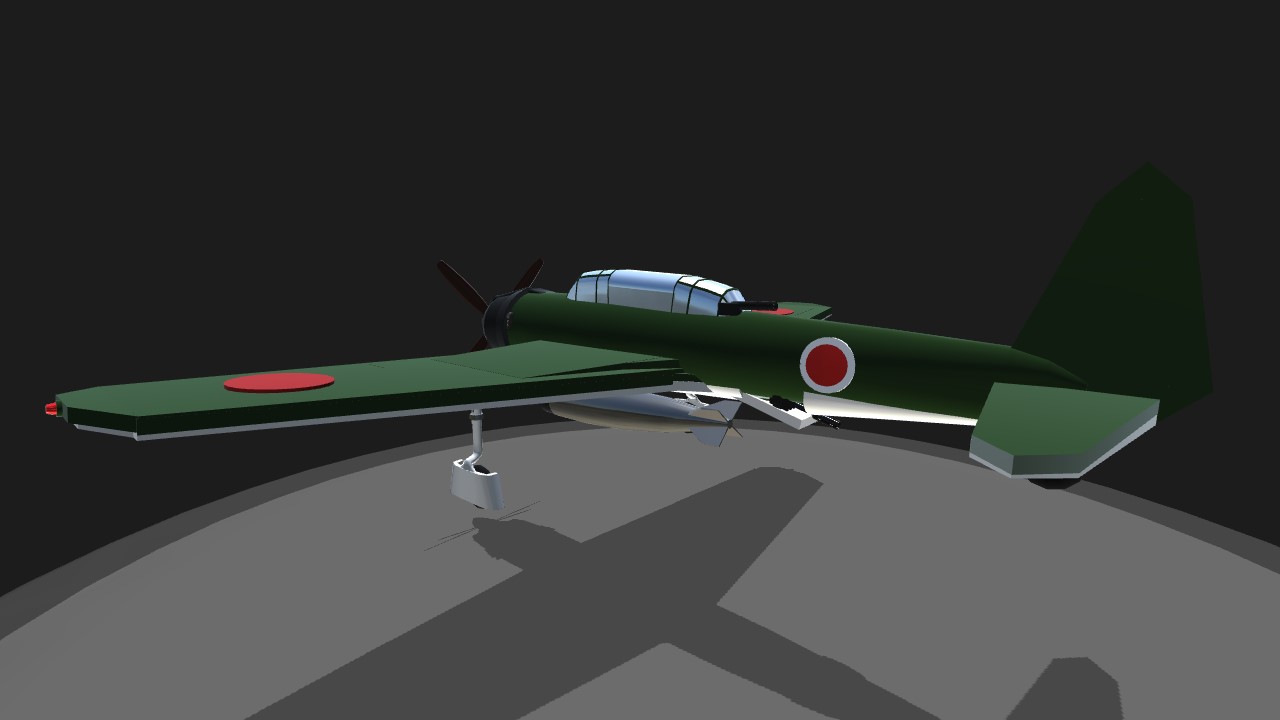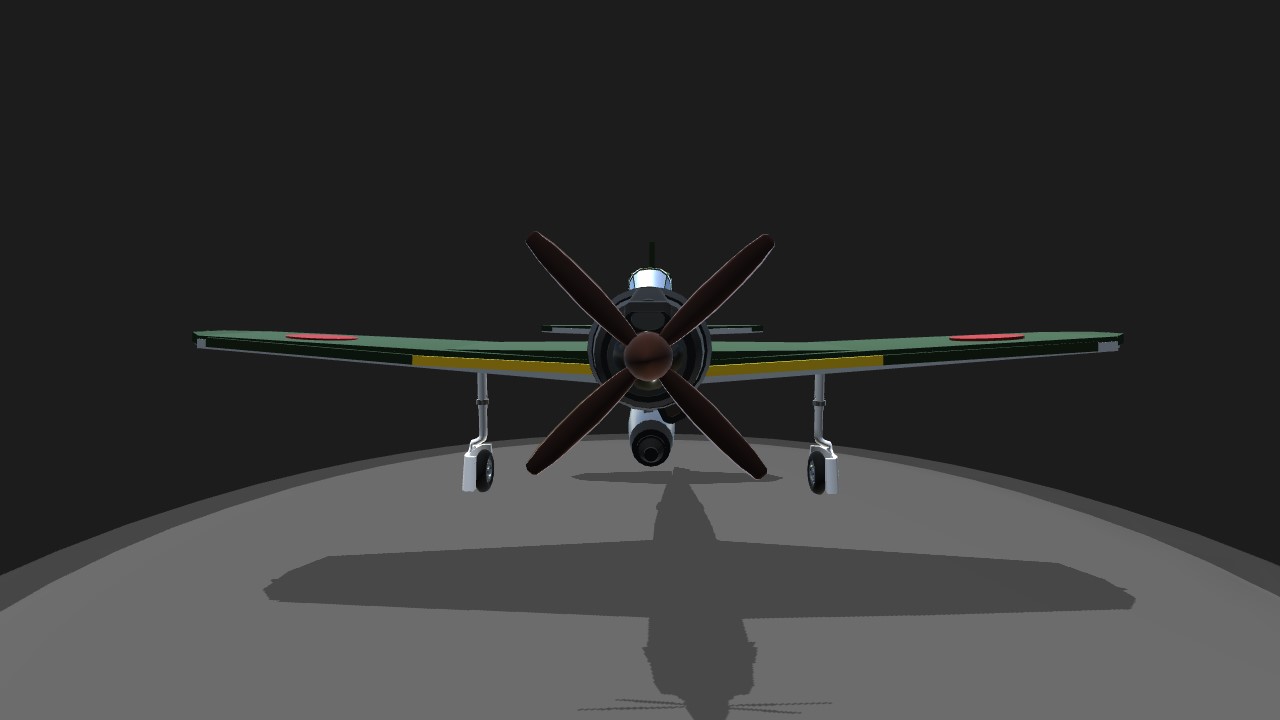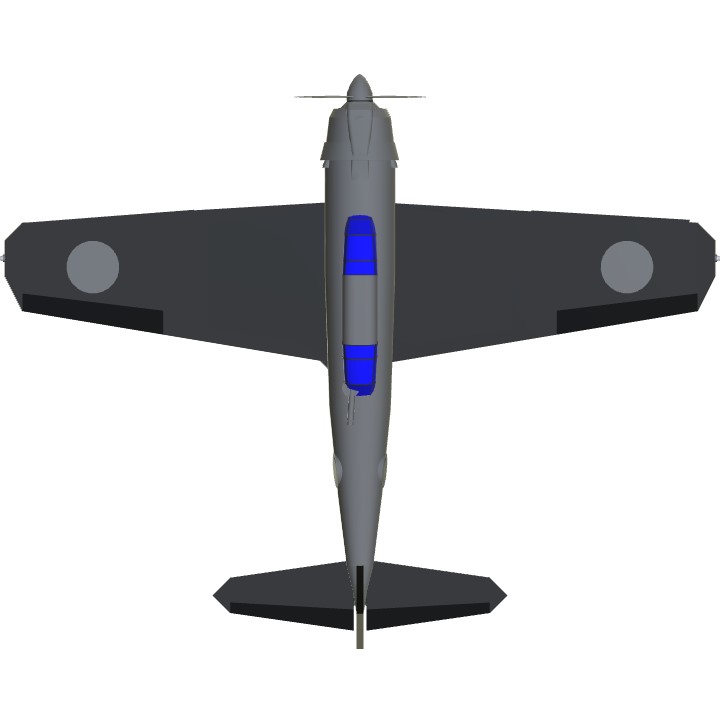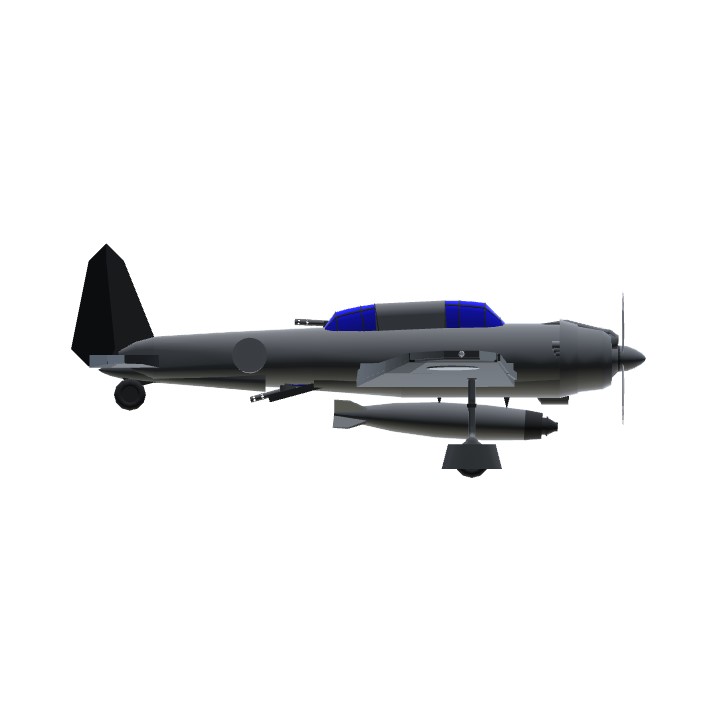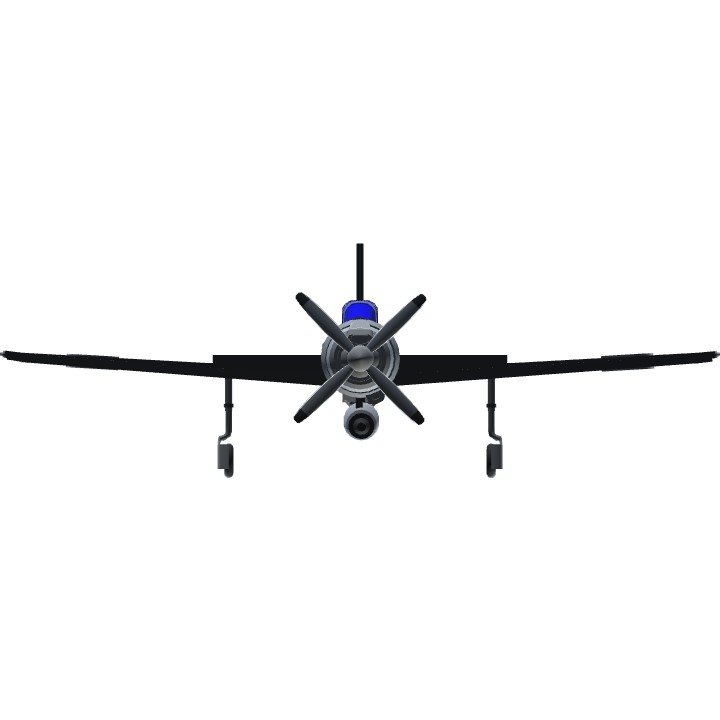The Nakajima B6N2 Tenzan ("Heavenly Mountain") was the Imperial Japanese Navy's standard carrier-borne torpedo bomber during the final years of World War II and the successor to the B5N2 "Kate". Due to its protracted development, a shortage of experienced pilots and the United States Navy's achievement of air superiority by the time of its introduction, the B6N was never able to fully demonstrate its combat potential.
B6N2 Model 12A :
Main production model, featured Mitsubishi MK4T Kasei 25 of 1,380 kW (1,850 hp). 1,131 built as B6N2/B6N2a. Revised tail armament. 7.7 mm (.303 in) Type 92 machine gun, replaced with one 13 mm Type 2 machine gun.
----------
History : The B6N Tenzan began reaching front-line units in August 1943 but only in small numbers. The intent was to gradually replace all of the older B5N Kate torpedo planes then operating aboard the carriers of the Third Fleet at Truk Atoll in the Caroline Islands. However, the B6Ns were prematurely committed to battle when increased Allied naval activity in the Solomon Islands indicated a likely invasion at Bougainville. In response to this threat, the IJN initiated Operation Ro. This involved reinforcing land-based air units at Rabaul with 173 carrier aircraft from First Carrier Division (Zuikaku, Shokaku and Zuiho), including forty B6Ns. These aircraft were flown from Truk to Rabaul between 28 October and 1 November. On 5 November fourteen B6N1s, escorted by four Zero fighters, were sent to attack American shipping anchored off Bougainville. Four B6N1s were lost and no actual hits were scored, yet returning Japanese pilots claimed to have sunk one large and one medium carrier, two large cruisers and two other cruisers or large destroyers. This was considered an unusually auspicious debut for the new warplane.[9]
Additional attacks mounted on 8 November and 11 November yielded less sanguine results and suffered heavy losses in return. Only 52 of the original 173 planes from First Carrier Division made it back to Truk on 13 November, among them just six B6N1 Tenzan's out of the forty initially committed.[10]
On 19 June 1944, the B6N made its carrier-borne combat debut at The Battle of the Philippine Sea, operating in an environment where the U.S. Navy had virtually complete air superiority. Subsequently, it failed to inflict any significant damage whatsoever whilst taking heavy losses from the U.S. Navy's new F6F Hellcat fighter.
By this point, small improvements in the B6N's performance were amongst the least of the Japanese Navy's problems. When the new model became available in mid-1944, Japan had already lost most of its large carriers, and was becoming desperately short of experienced pilots. The vast majority of B6N2 operations therefore took place from land bases and failed to achieve any major successes. The planes were extensively used in the Battle of Okinawa where they were also used for kamikaze missions for the first time.
Variants :
B6N1 : Prototypes - Engine Nakajima NK7A Mamori 11 of 1,394 kW (1,870 hp), four-blade propeller. Two examples built.
B6N1 Tenzan Navy Carrier Based-Attack Bomber, Model 11: First series model. 133 built (work number 1–133).
B6N2 Model 12: Main production model, featured Mitsubishi MK4T Kasei 25 of 1,380 kW (1,850 hp). 1,131 built as B6N2/B6N2a (work number 134–750, 753–1,266).
B6N2a Model 12A: Revised tail armament. 7.7 mm (.303 in) Type 92 machine gun, replaced with one 13 mm Type 2 machine gun.
B6N3 Model 13 Prototypes: Engine Mitsubishi MK4T-C Kasei 25c of 1,380 kW (1,850 hp). Modified landing gear for operating from land bases; two built (work number 751–752).
Total Production (all versions): 1,268 examples.
------
Specs (IRL) :
General characteristics
Crew: 3
Length: 10.87 m (35 ft 7¾ in)
Wingspan: 14.89 m (48 ft 10? in)
Height: 3.80 m (12 ft 5? in)
Wing area: 37.2 m² (400 ft²)
Empty weight: 3,010 kg (6,636 lb)
Loaded weight: 5,200 kg (11,460 lb)
Max. takeoff weight: 5,650 kg (12,460 lb)
Powerplant: 1 × Mitsubishi Kasei 25 14-cylinder air-cooled radial engine, 1,380 kW (1,850 hp) (take-off power)
Performance
Maximum speed: 481 km/h (260 knots, 299 mph) at 4,900 m (16,075 ft)
Cruise speed: 333 km/h (180 knots, 207 mph) at 4,000 m (13,125 ft)
Range: 3,046 km (1,644 nmi,1,892 mi)
Service ceiling: 9,040 m (29,660 ft)
Climb to 5,000 m (16,400 ft): 10 min 24 sec
------
Armament
Guns: 1 × 13 mm Type 2 machine gun in rear cockpit and 1 × 7.7 mm (0.303 in) Type 92 firing through ventral tunnel
Bombs: 1 x Type 91 Mod 3 Strong or 800kg bombs (1 x No.50 Model 2 (800kg) or 500kg, or 2 250kgx )
Specifications
General Characteristics
- Created On Windows
- Wingspan 33.6ft (10.2m)
- Length 26.7ft (8.1m)
- Height 10.6ft (3.2m)
- Empty Weight 11,059lbs (5,016kg)
- Loaded Weight 16,565lbs (7,513kg)
Performance
- Horse Power/Weight Ratio 0.06
- Wing Loading 22.4lbs/ft2 (109.4kg/m2)
- Wing Area 739.6ft2 (68.7m2)
- Drag Points 2256
Parts
- Number of Parts 96
- Control Surfaces 13
- Performance Cost 464


